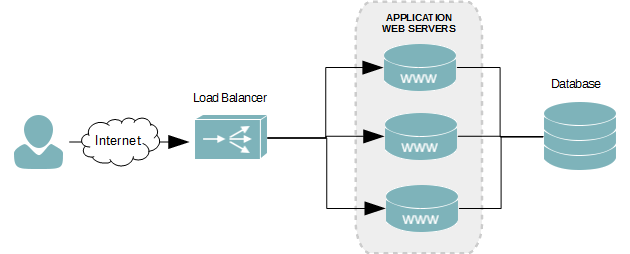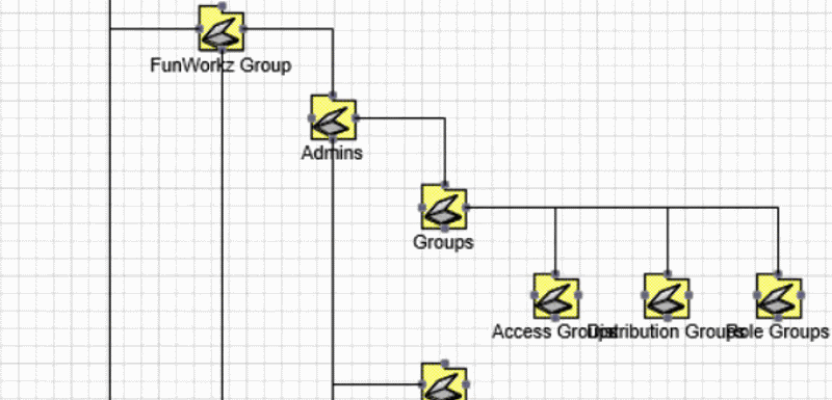The architecture of a Linux System consists of the following layers Hardware layer Hardware consists of all peripheral devices (RAM HDD CPU etc). Kernel It is the core component of Operating System, interacts directly with hardware, provides low level services to upper layer components. The following diagram shows the components that are required and the paths that credentials take through the system to authenticate the user or process for a successful logon. architecture applies to the Windows Server 2003, Microsoft Windows 2000 Server, Windows XP, and Windows 2000 Professional operating systems. An operating system (OS) is the software component of a computer system that is responsible for the management and coordination of activities and the sharing of the resources of the computer. usually running in the X Windows System (X). computer architecture support, embedded systems, stability, security, localization to a specific. There are two important divisions in UNIX operating system architecture. Kernel Shell In simple words you can say Kernal interacts with the machines hardware Shell interacts with the user The Kernel: The kernel of UNIX is the hub (or core) of the UNIX operating system. Kernel is a set of routines mostly written in C language. Microsoft created the Windows operating system in the mid1980s. Over the years, there have been many different versions of Windows, but the most recent ones are Windows 10 (released in 2015), Windows 8 (2012), Windows 7 (2009), and Windows Vista (2007). Windows Architecture Lets present a picture about Windows Architecture taken from [2: On the picture above we can see the HAL (Hardware Abstraction Layer), which is the first abstraction layer that abstracts the hardware details from the operating system. The kernel is the core of an operating system. It is the software responsible for running programs and providing secure access to the machine's hardware. Since there are many programs, and resources are limited, the kernel also decides when and how long a program should run. Moores Law Drives OS Change 10MB 1TB 100 000 128KB 4GB 32, 768 1, 280 640 3200x4 10 310 1981 2006 Factor Disk capacity DRAM capacity An operating system is the brain of a computer. A layered operating system is an operating system that groups related functionality together, and separates it from the unrelated. At the bottom of the diagram is the Service Platform, providing operating system, hardware, storage, networking, and the trust and management services for the whole system. The Service Framework hosts the process, logic, functions, and state management required by a Web servicebased application and is the full Enterprise Application Server. Operating System 2 Memory Management Memory management refers to management of Primary Memory or Main Memory. Main memory is a large array of. Microsoft Windows is a family of operating systems for personal and business computers. Windows dominates the personal computer world, offering a graphical user interface (GUI), virtual memory management, multitasking, and support for many peripheral. Understanding Windows 10 Editions, Architectures and Builds Another interesting thing this dialog displays is the channel the operating system is from, whether is OEM, Retail, Volume License. Application Deployment sample diagram for Visio 2010 Supported Operating System Windows 7, Windows Server 2003 Service Pack 1, Windows Server 2008, Windows Vista, Windows XP Service Pack 2 Visio Premium 2010 or Visio Professional 2010 Install Instructions. NTbased operating system family's architecture consists of two layers (user mode and kernel mode), with many different modules within both of these layers. Windows Vista, Windows Server 2003, Windows XP, Windows 2000 and Windows NT are all part of the Windows NT family ( NTbased) of Microsoft operating systems. Operating System Concepts Essentials 8th Edition 16. 3 Silberschatz, Galvin and Gagne 2010 Objectives To explore the principles upon which Windows 7 is designed and the specific components involved in the system To understand how Windows 7 can run programs designed for other operating systems To provide a detailed explanation of the Windows 7 file system Oracle Database 11g Architecture on Windows Page 3 Oracle Database 11g Architecture on Windows EXECUTIVE OVERVIEW Oracle Database 11g for Windows provides an optimized database solution for deployments that require enterprise scalability, reliability, and high performance. For all I know, Windows 10 supports both 32bit and 64bit architecture, even though 64bit is the de facto standard today. Build, test and deploy something new. Scale your deployments with a flexible and predictable pricing model. Introduction to the Windows XP Architecture Free download as Powerpoint Presentation (. txt) or view presentation slides online. Scribd is the world's largest social reading and publishing site. An example block diagram, showing the Microsoft Windows 2000 operating system architecture. A block diagram is a diagram of a system in which the principal parts or functions are represented by blocks connected by lines that show the relationships of the blocks. 2: OS Structures 4 OPERATING SYSTEM STRUCTURES PROCESS MANAGEMENT A process is a program in execution: (A program is passive, a process active. ) A process has resources (CPU time, files) and attributes that must be managed. Management of processes includes. Operating Systems OS Architecture Models ECE 344. ECE 344 Operating Systems easeir to port the operating system to new architectures more reliable (less code is running in kernel mode) more secure ECE 344 Operating Systems Windows NT ClientServer Structure. We are talking about Windows 10 System Architecture. Detailed OS Architecture is a blueprint, not a source code. The skyscraper is built by producing (very) detailed blueprints, finished before. Microsoft Dynamics AX system architecture. The following diagram provides a highlevel overview of the system architecture of Microsoft Dynamics AX. This diagram does not depict the system topology or physical infrastructure that are required for the deployment. AOS is a Windows service that requires a Windows Server operating system. The Microsoft Cybersecurity Reference Architecture describes Microsofts cybersecurity capabilities and how they integrate with existing security architectures and capabilities. We recently updated this diagram and wanted to share a little bit about the changes and the document itself to help you better utilize it. Windows Architecture The Basics (API) is the programming interface to the Microsoft Windows operating system family. It provides services used by all Windowsbased applications to enable applications to provide a Graphical User Interface (GUI), access system resources, incorporate audio and much more. The figure below is more detailed diagram of the core Windows system architecture and components. Note that it still does not show all components (networking in particular). First notice the line dividing the usermode and kernelmode parts of the Windows operating system. Introduction In this article, I will try to differentiate Windows 10 from the prior releases of it. I will provide a small overview of the concepts of how Backward Compatibility of the Apps are possible in Windows 10 and the Converged Kernel approach to Windows 10. Windows 7 File System Structure Formally, a file system is a way to organize, store and name data at information storage devices. But we can say simpler: it is a format of saving information at various storage devices and, in the first place, at the computer hard disk. Overview of Windows storage disk architecture for troubleshooting disk storage issues. IO request from a user application or a component of the operating system. The design of an operating system architecture traditionally follows the separation of concerns principle. This principle suggests structuring the operating system into relatively independent parts that provide simple individual features, thus keeping the complexity of the design manageable. Applications architecture is the high level structure of an application system. It's the process of defining a structured solution that meets all of the technical and operational requirements, while optimizing common quality attributes such as performance, security, and manageability. Windows Core Operating Systems Division Microsoft Corporation Swapping system with memory mapping Kbytes of disk, fixed disks Uniprocessor Kernelmode Architecture of Windows NTOS executive layer Dispatch CPU mgmt: scheduling, synchr, ISRsDPCsAPCs Windows Server System Reference Architecture is a technology architecture that has been rigorously tested and proven in a partnered lab environment to provide exceptional planning and implementation guidance that addresses fundamental Windows Server 2003 infrastructure issues such as availability, security, scalability, and manageability of the. 0, Windows 2000, Windows XP, Windows Vista, Windows 7, and Windows Server are all based on a collection of code known as the NT Kernel. System Architecture [ edit Today were starting a new series of posts focused on understanding the Windows System Architecture itself. the physical hardware from the operating system to Virtualization allows multiple virtual machines, with heterogeneous operating systems (e. , Windows 00 Server and Linux) and applications to run in isolation, sidebyside on the same physical machine. The book is therefore suitable both for beginning courses in operating systems and for introductory courses on how Windows operating system functions. Windows is a huge operating system. This book presents the key components of Windows operating system in a short and straightforward way. The basic concept: Windows 8 on x86x64 is a dualpersonality operating system. It will run Metrostyle apps and Desktop apps. Developers writing Metro apps will use the new Windows Runtime (WinRT. Windows NT Architecture Gilbert Held Payoff Windows NT is a sophisticated operating system for workstations and network servers. This article helps network managers to understand the communications capability of Abraham Silberschatz, Greg Gagne, and Peter Baer Galvin, Operating System Concepts, Ninth Edition, Chapter 2 This chapter deals with how operating systems are structured and organized. Different design issues and choices are examined and compared. The graphical mode interface operating system is a mousebased operating system (Windows Operating System, LINUX), wherein a user performs the tasks or operations without typing. William Stallings This document is an extract from Windows 3. 1, another Microsoft operating system (the followon to Windows 3. However, As with a pure microkernel architecture, Windows is highly modular. Each system function is managed by just one component of the operating system. The Windows 2000 operating system architecture is a hybrid architecture that is comprised of clientserver, layered, objectoriented, and symmetric multiprocessing architecture principles. Although it uses objects to represent shared system resources, Windows 2000 is not strictly an objectoriented operating system. The Windows Millennium Edition, called Windows Me was an update to the Windows 98 core and included some features of the Windows 2000 operating system. Some architectural details of the Windows operating system family. Some architectural details of the Windows operating system family. Operating Systems I PT FF 2014 Simplied Windows Architecture 5 dowsdows on architectureson architectures Tools OS2 Windows POSIX Environment Subsystems User Application Subsystem DLL User Mode Kernel. Operating systems Architecture. Introduo: 222 Windows NT was originally microkernel Multiple OS can be buil on top of a microkernel Each operating system will make use of different system processes. Distributed OS G51CSA Computer Systems Architecture Operating Systems (Linux) Built for a set of platforms based on a particular architecture(s) Microsoft Windows vs. Windows CEMobile IA32X8664, PowerPC. Core of the Operating System is called a kernel.











